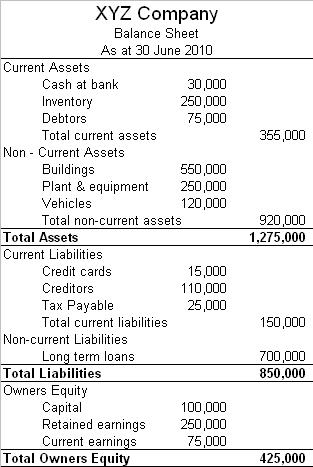By Jae Jun. Originally published at ValueWalk.
Financial ratio analysis has come a long way. The US stock market and the businesses in USA are superb because of the transparency offered to investors.
It is not perfect, but compared to the rest of the world, the access to financial statements and thus the variety of financial ratios that you can crunch is world class.
With that, I want to go through 20 balance sheet ratios to help you determine the financial health of a company. These balance sheet ratios can be applied to both the public and private sector.
You will note that most of these balance sheet ratios are basic, which makes it easy to calculation. Simple ratios and ideas are often the best, overlooked and forgotten.
At the end of the article, you can download a pdf of the 20 balance sheet ratios.
Now, let’s get started on the balance sheet ratios refresher.
A Refresher on Balance Sheet Ratios

The Balance Sheet
Solvency Ratios
Solvency Ratios are quick and easy to calculate and easy to interpret.
The objective is to see whether a company has enough cash, assets and low debt to continue operations without running into financial trouble.
Quick Ratio
Quick Ratio = (Current Assets – Inventories) / Current Liabilities
The quick ratio measures a company’s ability to meet its short-term obligations with its most liquid assets. The higher the quick ratio, the better the position of the company.
Current Ratio
Current Ratio = Current Assets / Current Liabilities
An even simpler variant to the quick ratio and is used to determine the company’s ability to pay back its short term liabilities. You’ll see this balance sheet ratio everywhere.
If the ratio is below 1, it raises a warning sign as to whether the company is able to pay its short term obligations when due. It doesn’t mean the company will go bankrupt, but is something that has to be looked at. If a company has a low current ratio year after year, it could be a characteristic of the industry where companies operate and high debt levels.
Debt/Equity Ratios
Total Debt/Equity Ratio = Total Liabilities / Shareholders Equity
Long Term Debt/Equity Ratio = Long Term Debt / Shareholders Equity
Short Term Debt/Equity Ratio = Short Term Debt / Shareholders Equity
There are different variations of the debt to equity ratios, but the objective of these financial ratios is to determine how a company has been financing its growth.
A high ratio means that the company has been growing due to debt. Not all debt is bad, but if the number is exceedingly high, remember that the company has to pay off the loan as well as interest payments.
An important factor to consider then is to determine whether the returns generated from the debt exceeds the cost of debt (i.e. interest).
Activity Ratios
Activity financial ratios measure how well a company is able to convert its assets in the balance sheet into cash or sales. By analyzing the activity ratios, you can see how efficient and well run a company is.
These financial metrics aren’t just for the company, but also measures the people behind the business and how well they are running the show.
Days Sales Outstanding (DSO)
Days Sales Outstanding = (Receivables / Revenue) x 365
Cash is king and a business capable of converting its receivables into cash quickly is a great sign of health and efficiency.
A low DSO number means that it takes a company fewer days to collect its accounts receivable. A high DSO number shows that a company is selling its product to customers on credit and taking longer to collect money.
Days Inventory Outstanding (DIO)
Days Inventory Outstanding = (Inventory / COGS) x 365
This financial ratio is used to measure the average number of days a company holds inventory before selling it.
This ratio is industry specific and should be used to compare competitors. A company like Boeing will have vastly different DIO than a company like Amazon where inventory turnover is high.
Days Payable Outstanding (DPO)
Days Payable Outstanding = (Accounts Payable / COGS) x 365
Days Payable Outstanding shows the time in days a business has to pay back its creditors. On the flip side, it also shows how long the company can utilize the cash before paying it back.
The longer a company can delay payments, the better.
Cash Conversion Cycle
Cash Conversion Cycle = DIO + DSO – DPO
Putting DIO, DSO and DPO together, you get the cash conversion cycle.
The entire cash conversion cycle is a measure of management effectiveness. The lower the better, and a great way to compare competitors.
For a full explanation as well as company comparisons and examples, check out the article on cash conversion cycle.
Turnover Ratios
Receivables Turnover = Revenue / Average Accounts Receivables
The receivables turnover ratio is one that is categorized as an activity ratio because it measures the company’s effectiveness in collecting its credit sales.
Inventory Turnover = COGS / Average of Inventory
Inventory is money. It costs money to buy, it costs money to just hold it because it takes up a lot of overhead if it isn’t cleared out. You waste shelf space, the product gets old and it may have to be sold at a fraction of the price just to get rid of it.
Inventory turnover is important for companies with physical products and is best used to compare against peers. After all, the inventory turnover for a retailer like Wal-Mart is going to be very different to a car company like Ford.
Average Age of Inventory (Days)
Average Age of Inventory = Average of Inventory / Revenue
Average age of inventory is just the inverse of Inventory Turnover.
I’ve separated the two because it is easier to visualize the inventory age in days. Let’s say that the inventory turnover for Safeway is 10. But it just makes it easier to visualize the inventory when it is described as 36.5 days instead of a turnover ratio of 10.
Intangibles to Book Value Ratio
This balance sheet metric is helpful in checking the quality, as well as the health.
Unless a company holds a lot of valuable intellectual property or well known brands, I like to see intangibles kept low. This is a simple balance sheet analysis to show how of the company is built on intangibles.
Intangibles to Book Value = Intangibles / Book Value
Inventory to Sales Ratio
Inventory to Sales = Inventory / Revenue
A rather simple and less used ratio. It is mostly useful when you track it year over year or every quarter.
The objective is to see how inventory is being managed as it will signal potential problems with cash flow.
An increase in the inventory to sales ratio can indicate that
- your investment in inventory is growing more rapidly than sales
- or sales are dropping
- your investment in inventory is shrinking in relation to sales
- sales are increasing
Capital Structure Ratios
Capital structure
The post 20 Balance Sheet Ratios to Determine a Firm’s Health appeared first on ValueWalk.
Sign up for ValueWalk’s free newsletter here.






